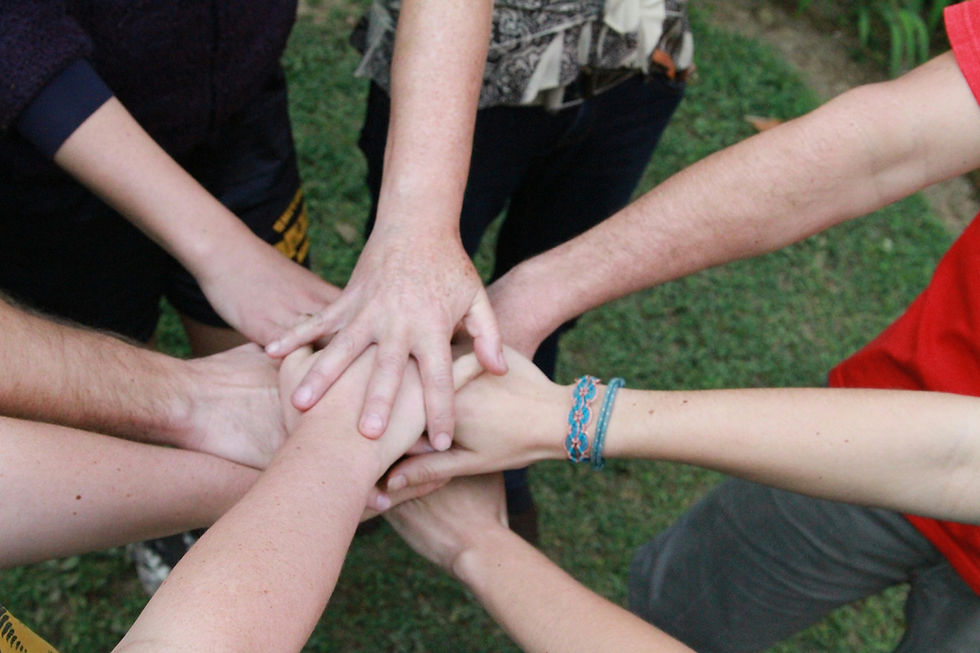- mina rretreats
- Jun 28
- 4 min read
In today's fast-paced business environment, corporate retreats have evolved from simple getaways to strategic opportunities. These gatherings can serve as powerful tools for realigning teams with the organization's goals. With proper planning, a retreat can energize employees and drive the organization toward achieving specific objectives. Here are practical steps to ensure your retreat aligns seamlessly with your business goals.
Define Clear Objectives
Before planning your retreat, establish clear, specific objectives that reflect your organization's core goals. Talk with stakeholders to identify priorities, such as increasing market share, enhancing teamwork, or innovating new products.
For example, if your company aims to improve customer service ratings by 20% over the next year, design retreat activities that emphasize teamwork in problem-solving and client engagement. By clarifying these objectives in advance, you can ensure that each retreat activity directly supports the company's vision.
Involve the Team in Planning
A successful retreat shouldn't be solely a leadership initiative. Involving team members in the planning process fosters ownership and enthusiasm.
Consider sending out a survey to gather input on what employees believe would be beneficial for meeting company goals. For instance, if team members express a need for skills training or conflict resolution workshops, these can be incorporated into the schedule. Research shows that companies that facilitate employee involvement tend to see a 60% increase in engagement and satisfaction.

Align Activities with Goals
Once you have outlined your objectives and gained team input, it's crucial to align retreat activities with these goals.
If teamwork improvement is a primary focus, choose interactive team-building exercises that require cross-departmental collaboration. For example, you could set up a scavenger hunt that involves teams from different departments solving challenges together. If driving innovation is crucial, implement brainstorming sessions focusing on product development ideas, aiming to collect at least ten viable concepts during the retreat.
Encourage Open Communication
Establishing an environment that promotes open communication is vital for retreat success. Encourage discussions where team members can share thoughts, concerns, and innovative ideas.
Incorporate activities designed to build trust and transparency, such as "circle time," where employees share personal experiences. This approach can improve communication flow and lead to more open conversations about achieving business objectives, creating a more cohesive workforce.
Evaluate Success Post-Retreat
The effectiveness of a retreat is measured by the impact it has post-event. After the gathering concludes, assess whether the set objectives were achieved and how effectively the activities contributed to these outcomes.
Distributing post-retreat surveys allows you to gather feedback. Data from these surveys can help you identify what worked and what didn't. For instance, if 75% of respondents find value in team-building activities but suggest more focus on skill development for the next retreat, this insight informs future planning.
Foster a Culture of Continuous Improvement
Aligning your corporate retreat with business goals is more than just a one-time effort; it should integrate into a culture of continuous improvement. Use feedback from evaluations to create actionable plans addressing challenges and enhancing observed strengths.
Encourage team members to regularly share their thoughts on how to improve future retreats. Research shows that organizations with a feedback culture have a 14% higher employee performance rate, which can lead to more successful and tailored retreats over time.
The Power of Alignment
Aligning your corporate retreat with business goals is essential for maximizing its impact. By clearly defining objectives, actively involving team members in planning, aligning activities with these goals, promoting open communication, and evaluating success, organizations can transform retreats into powerful tools for driving success.
With focused planning and execution, a corporate retreat can refresh your workforce and steer your organization toward its strategic goals. A successful retreat not only facilitates teamwork but reinforces a shared vision that advances the entire company.
The Ultimate Accelerator for Your Business Goals
The most effective way to ensure your retreat achieves its strategic objectives is to partner with experts who know how to translate business goals into a powerful, live experience. A purpose-driven offsite requires more than logistical prowess; it requires strategic experience design.
With a Retreats all-inclusive package, the planning process starts with your core business objective. The expert team at Retreats, with deep knowledge in both corporate strategy and event architecture, works hand-in-hand with you to build a custom itinerary laser-focused on your desired outcomes. Retreats designs the workshops, sources the right facilitators, and selects a venue that amplifies your mission. With every complex logistical detail managed, your leadership team is free to be fully present and engaged in the high-level work you're there to accomplish. Consider these offsites a strategic business meeting, supercharged with inspiration, where the environment is your accelerator and achieving your goals is the main event.
Explore our goal-oriented destinations at Retreats and find the perfect setting to drive your business forward.
To get updated about the latest planning tips for corporate retreats and business events, please register to Retreats.



